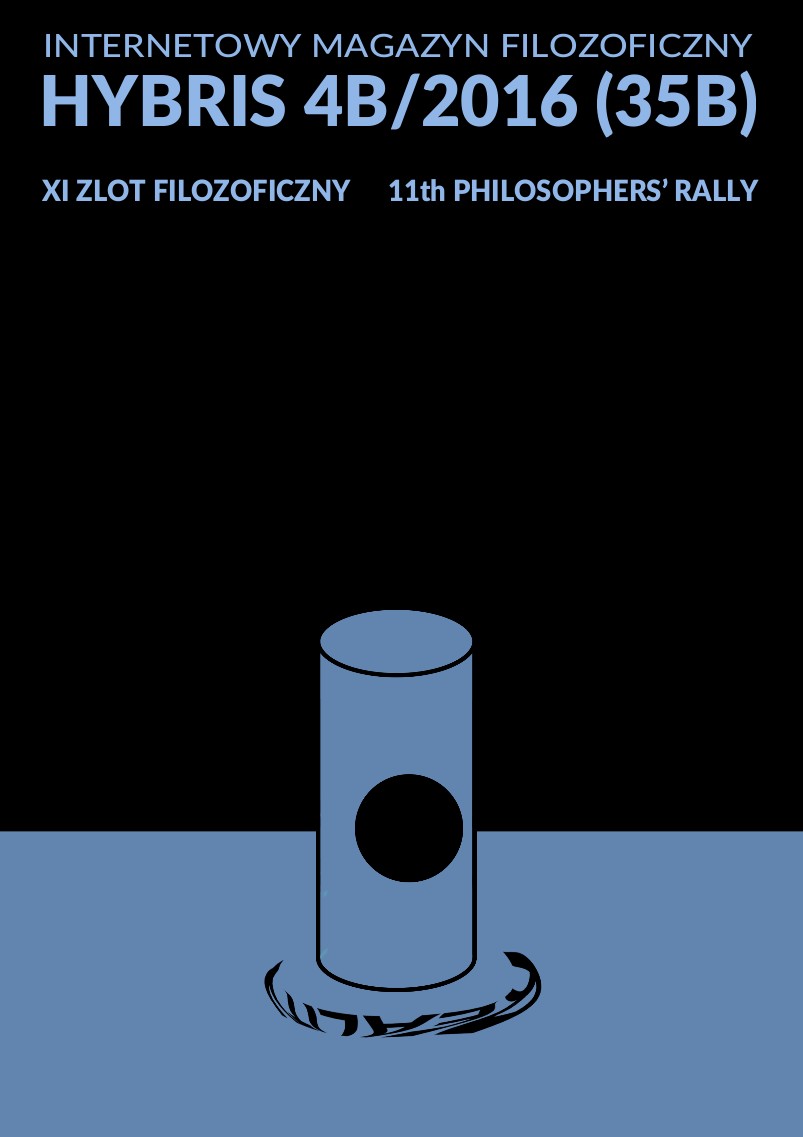Historiozoficzny apokaliptyzm C. G. Junga
DOI:
https://doi.org/10.18778/1689-4286.35.2.04Słowa kluczowe:
Carl Gustav Jung, psychoanaliza, psychologia głębi, gnoza, krytyka kultury, New AgeAbstrakt
Critique of culture is one of the biggest parts of philosophy/psychology created by Carl Gustav Jung. Jung was witness of World War I and World War II, his thought was deeply influenced by writings of F. Nietzsche, who assured us that we (modern people) are sentenced to Age of nihilism. Jung seemed to take over this belief, developing it inside his own philosophical system. In Jung’s way of thinking Age of nihilism turned into a monumental discourse about New Age, where overgrown Enlightment’ Reason must abdicate, leaving its position to The Age of new spirituality. In my paper I’m trying to present thought of The Swiss psychologist as an apocalyptical prophecy, but not only apocalyptical. My aim is to find bright beam among this very pessimistic part of his oeuvre.
Bibliografia
Jung, Carl, Gustav, 2009, Aion. Przyczynki do symboliki jaźni, Warszawa: Wydawnictwo KR
Zobacz w Google Scholar
Jung, Carl, Gustav, 2011, Archetypy i nieświadomość zbiorowa, Warszawa: Wydawnictwo KR
Zobacz w Google Scholar
Jung, Carl, Gustav, 1993, Mandala — symbolika człowieka doskonałego, Poznań: BRAMA — Książnica Włóczęgów i Uczonych
Zobacz w Google Scholar
Jung, Carl, Gustav, 2009, O rozwoju osobowości, Warszawa: Wydawnictwo KR
Zobacz w Google Scholar
Jung, Carl, Gustav, 2009, Przełom cywilizacji, Warszawa: Wydawnictwo KR
Zobacz w Google Scholar
Jung, Carl, Gustav, 2005, Psychologia a religia Zachodu i Wschodu, Warszawa: Wydawnictwo KR
Zobacz w Google Scholar
Jung, Carl, Gustav, 2010, Zaratustra Nietzschego, Notatki z seminarium 1934–1939, wydał James L. Jarrett, T.1/ T.2, Warszawa: Wydawnictwo KR
Zobacz w Google Scholar
Jung, Carl, Gustav, 2010, Życie symboliczne, Warszawa: Wydawnictwo KR.
Zobacz w Google Scholar
Pobrania
Opublikowane
Jak cytować
Numer
Dział
Licencja

Utwór dostępny jest na licencji Creative Commons Uznanie autorstwa – Użycie niekomercyjne – Bez utworów zależnych 4.0 Międzynarodowe.






